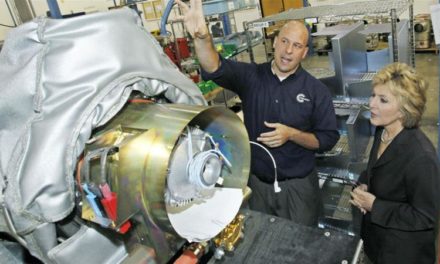The US space agency Nasa has landed a new robot on Mars after a dramatic seven-minute plunge to the surface of the Red Planet.
The InSight probe aims to study the world’s deep interior, and make it the only planet – apart from Earth – that has been examined in this way.
Confirmation of touchdown came through on cue at 19:53 GMT.
It ended an anxious wait in which the robot radioed home a series of updates on its descent.
Nasa’s mission control in California erupted into cheers when it became clear InSight was safe on the ground.
The robot is now sitting on a vast, flat plain known as Elysium Planitia, close to the Red Planet’s equator. Before landing, the agency had dubbed it the “biggest parking lot on Mars”.
The first picture from the probe came back very quickly. It showed a smudged, fisheye view of Elysium Planitia.
The image was acquired with the translucent lens cap still in place on the camera. The dust kicked up in the landing obscured much of the view.
Better pictures will be taken in the coming days.
Like all previous landing attempts at Mars, Insight’s race to the surface – the first attempt since 2012 – was a tense affair.
Stage by stage and metre by metre, the robot reported back its progress.
It had entered the atmosphere faster than a high-velocity bullet, using the combination of a heatshield, parachute and rockets to bring itself to a gentle stop.
Key to InSight’s continued survival now on the harsh surface of Mars is the deployment of its solar panels, which were stowed for the descent.
The robot absolutely has to start generating power to operate its systems and to warm equipment in the sub-zero temperatures that persist on the Red Planet.
Only when these immediate concerns are taken care of can Nasa begin to think about InSight’s scientific mission.
What is different about this mission?
This will be the first probe to dedicate its investigations to understanding Mars’ interior.
Scientists want to know how the world is constructed – from its core to its crust. InSight has three principal experiments to achieve this goal.
The first is a package ofFranco-British seismometersthat will be lifted on to the surface to listen for “Marsquakes”. These vibrations will reveal where the rock layers are and what they are made of.
A German “mole”will burrow up to 5m into the ground to take the planet’s temperature. This will give a sense of how active Mars still is.
Andthe third experiment will use radio transmissionsto very precisely determine how the planet is wobbling on its axis. Deputy project scientist Suzanne Smrekar uses this analogy: “If you take a raw egg and a cooked egg and you spin them, they wobble differently because of the distribution of liquid in the interior.
And today we really don’t know if the core of Mars is liquid or solid, and how big that core is. InSight will give us this information.”
Why do we need to know this?
Scientists understand very well how Earth’s interior is structured, and they have some good models to describe the initiation of this architecture at the Solar System’s birth more than 4.5 billion years ago.
But Earth is one data point and Mars will give researchers a different perspective on how a rocky planet can be assembled and evolve through time.
InSight chief scientist Bruce Banerdt said: “The small details in how planets evolve are what we think make the difference between a place like Earth where you can go on vacation and get a tan, and a place like Venus where you’ll burn in seconds or a place like Mars where you’ll freeze to death.”






Facebook Comments